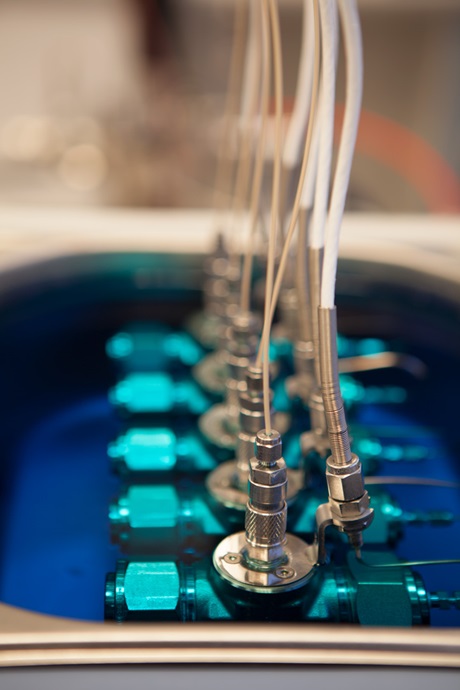The Rocking Cell (RC-5; has five test cells, PSL Systemtechnik, Germany) is used to test kinetic inhibitors for natural gas hydrate nucleation, growth and decomposition.
Each of the five stainless steel test (AISI 316L) cells has a volume of 40.13 cm3 and can operate up to 200 bar working pressure (Fig. 1B).

The working temperature range of the cells is between -10 °C and 60 °C. A stainless steel ball (Dia: 17 mm) is placed inside and rolls back and forth along the length of the cell to agitate the solution inside it.
The mixing in the cells is controlled by rocking the cells back and forth between angles of -45° and +45°.
Once the cells are loaded with the desired solution, they are placed in a cooling bath controlled by an external refrigerator, which can be operated between 10 °C and 60 °C. The pressure and temperature of cells are monitored by a data acquisition system throughout the experiment.
Publications
Christine Malmos Perfeldt, Pei Cheng Chua, Nagu Daraboina, Dennis Friis, Erlend Kristiansen, Hans Ramløv, John M. Woodley, Malcolm A. Kelland, and Nicolas von Solms, “Inhibition of Gas Hydrate Nucleation and Growth: Efficacy of an Antifreeze Protein from the Longhorn Beetle Rhagium mordax,” Energy and Fuels, 28, 3666 (2014).
Nagu Daraboina, Christine Malmos, Nicolas von Solms, “Synergistic kinetic inhibition of natural gas hydrate formation,” Fuel 108, 749 (2013)